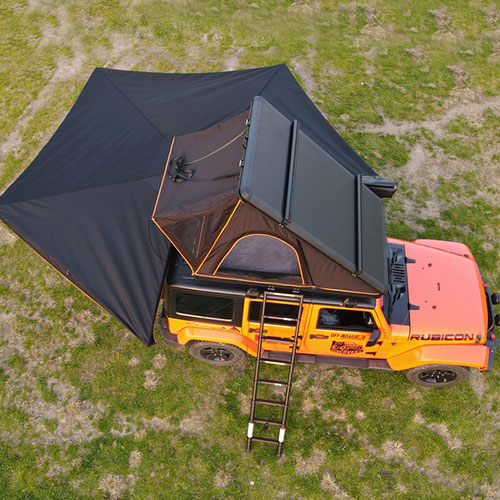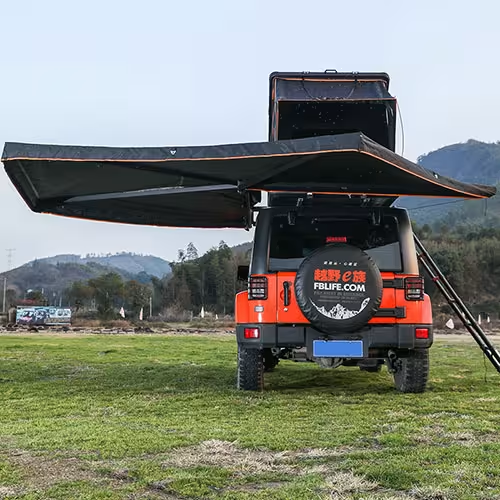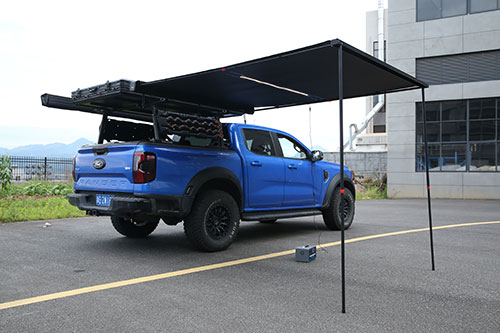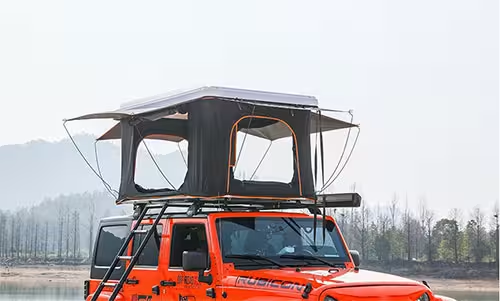Table of Contents
Introduction

Imagine pulling up beside a tranquil lake in the Canadian wilderness, listening to the gentle lapping of water against the shore as the sun dips below the trees. You unroll your car camping tent, unpack your gear, and within minutes, your temporary shelter is ready—warm, dry, and cozy. A well-chosen and well-prepared car camping tent, with its convenience and comfort, ensures your adventure becomes an unforgettable experience rather than a frustrating one.
This guide aims to help campers of all levels—from beginners to seasoned road warriors—maximize their car camping experience. You’ll learn how to choose the right tent, stay warm in varying weather conditions, efficiently organize your campsite, and ensure every overnight stay is comfortable and safe.
Choosing the Right Car Camping Tent for Your Adventure
Key Features to Look for in a Car Camping Tent
When choosing a car camping tent, consider more than just size. Look for high ceilings so you can stand comfortably inside, multiple doors for easy access, vestibules for storing shoes or wet gear, and durable zippers that won’t jam after repeated use. Interior features like lantern hooks, mesh pockets, and gear lofts make organization simple, while rainfly coverage ensures protection during unexpected showers.
Sizing by Occupancy and Use
A good rule of thumb: always choose a tent larger than the number of occupants. For example, a family of three benefits from a 4-person car camping tent, providing extra room for gear and movement. If you’re camping with friends or planning extended trips, consider tents with separate rooms, multiple entrances, or a spacious vestibule area. Car camping tents differ from backpacking tents by offering more space, comfort, and standing height, making them ideal for long stays or larger groups.
Weather Considerations for Your Car Camping Tent
Weather can make or break a camping trip. For spring and fall, tents with high waterproof ratings (1500–3000 mm PU coating) and sealed seams are critical. Summer campers should look for mesh panels to enhance airflow and reduce heat buildup. For colder seasons or windy areas, four-season tents with reinforced poles, snow flaps, and insulated designs help maintain warmth. Check the manufacturer’s wind resistance rating to avoid surprises in gusty conditions.
Seasonal Scenarios & Tent Choice
- Spring Camping: Choose a tent with complete rainfly coverage and a well-sealed floor to handle melting snow or heavy spring showers.
- Summer Camping: Ventilation is essential. Mesh windows, doors, and vents prevent heat buildup while keeping insects out.
- Fall/Winter Camping: Prioritize insulation and durability. Consider thermal liners and insulated ground mats to combat cold nights.
Mastering Your Car Camping Tent Setup

A Step-by-Step Guide to Pitching Your Car Camping Tent
- Site Selection: Find a level, debris-free spot. Avoid low areas prone to pooling water.
- Ground Protection: Lay a footprint or tarp to protect the tent floor from rocks and moisture.
- Tent Body Setup: Spread out the tent and loosely stake the corners.
- Raising the Poles: Insert poles or assemble frames, ensuring proper tension without over-bending.
- Rainfly Installation: Attach and secure the rainfly to prevent leaks and protect from wind.
- Guy Line Adjustment: Properly stake and tension guy lines to stabilize the tent, especially in open or windy areas.
Pro Tip: Practice at home before your trip to save time and reduce frustration at the campsite.
Pro Tips for Positioning and Securing Your Car Camper Tent
- Wind Protection: Position your tent near natural barriers like trees or hills.
- Door Orientation: Face the entrance away from prevailing winds to minimize drafts and keep rain out.
- Drainage: Ensure the tent sits on slightly sloped ground, directing water away from the interior.
- Anchoring: Use strong stakes, sandbags, or guy lines for enhanced stability in lakeside or open-field campsites.
On a lakefront in Ontario, positioning the tent so the door faces east reduces morning wind impact and ensures pleasant sunrise views.
How to Stay Warm Camping in a Tent

Insulation Is Key: Ground-Up Warmth in Your Car Camping Tent
Cold ground can sap body heat quickly. Use insulated sleeping pads rated for your expected temperatures. R-values indicate thermal resistance: the higher the R-value, the better the insulation. Combining a closed-cell foam pad with an inflatable air mattress provides additional warmth. Layering multiple pads can be critical in colder seasons.
Your Sleep System: Bags, Liners, and Layers
Select a sleeping bag rated lower than the anticipated nighttime temperature. Base layers made from moisture-wicking materials, combined with a fleece or silk liner, enhance warmth. For extreme cold, consider a thermal blanket inside your sleeping bag. Accessories like insulated pillowcases or wearing a warm hat while sleeping further improve comfort.
Managing Moisture and Ventilation in Your Car Camping Tent
Condensation can make nights uncomfortable. Even in cold weather, your breath releases moisture that condenses on tent walls. Open vents slightly to allow airflow, keeping the interior dry without excessive drafts. In rain or snow, balance ventilation with coverage, ensuring your sleeping area remains both warm and dry.
What to Bring Tent Camping: The Essential Checklist
Shelter & Sleep System
| Item | Purpose | Tips |
|---|---|---|
| Tent & Rainfly | Shelter & weather protection | Ensure all poles and stakes are included |
| Groundsheet/Footprint | Protects tent floor | Adds waterproofing & durability |
| Sleeping Pads | Insulation from ground | Consider R-value & comfort |
| Sleeping Bag & Liner | Warmth & comfort | Match rating to season |
| Pillow | Head support | Pack a compact travel pillow |
Campsite Comfort and Convenience
Include folding chairs, a lightweight table, headlamps, and string lights to enhance comfort. Portable rugs or mats create a cozy space inside or outside your car camper tent, keeping dirt and moisture out.
Kitchen and Safety Gear
Bring a compact stove, cooler, water supply, multi-tools, and a first aid kit. Properly store food to prevent wildlife encounters and maintain campsite hygiene. A small fire extinguisher or sand bucket is recommended for cooking safety.
Beyond the Basics: Elevating Your Car Camping Tent Experience

Organizing Your Car Camping Tent for Maximum Space
Use hanging organizers, door pockets, and vestibules to maximize usable space. Store shoes, backpacks, and gear outside the sleeping area to keep the interior comfortable and clutter-free.
Adding Comforts of Home
Battery-powered lights, a small indoor rug, or even a compact camp table enhance the camping experience. Reading materials, a travel speaker, or a portable fan make your car camping tent feel like a temporary home.
Conclusion
A successful car camping trip is rooted in preparation. Selecting the right tent, mastering setup, managing warmth and ventilation, and organizing your gear ensures comfort and enjoyment. Put these strategies into practice and elevate your next adventure.
For high-quality, durable car camping tents suited for families or solo adventurers, contact us at Xingyue. Our OEM/ODM services help you find the perfect tent for your outdoor lifestyle, complete with customization options to meet your needs. Start your next journey well-prepared and comfortable!
FAQ
What is the difference between a car camping tent and a backpacking tent?
Car camping tents prioritize space, comfort, and standing height. They are heavier and bulkier. Backpacking tents are lighter and more compact for portability.
How can I keep my car camper tent cool in hot weather?
Choose tents with mesh doors and windows for airflow, use shade when possible, and remove the rainfly when safe.
What should I do if it rains while camping?
Secure the rainfly, dig shallow drainage channels around the tent, and keep gear elevated from the tent floor.
How do I clean and store my car camping tent after a trip?
Clean with a damp cloth, dry completely, and store in a cool, dry area. Avoid folding when wet to prevent mildew.
